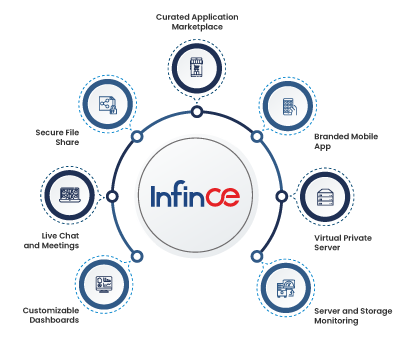Why Small Businesses Need to Invest in SaaS Delivery Model
The widespread adoption of Software-as-a-Service or SaaS model of technology deployment is undoubtedly a key driver of digital disruption across industries. Studies show that the global SaaS market is expected to touch or exceed a staggering USD 623 billion by 2023. And the biggest beneficiary of SaaS across every industrial sector is small and medium businesses operating in these sectors.
While big players do have their own key advantages, it is the smaller players who can truly transform their business. With SaaS, they get access to powerful tools that can enable them to compete with the best in the business without worrying about costs. With SaaS, they only need to pay for the resources they use, can scale up or down depending on business needs and enjoy hassle-free technology deployment without dedicated monitoring staff. This allows them to offer the best of services to customers using the same digital solutions as used by leaders in their industry.
Still skeptical about making the SaaS switch? Here are 5 reasons to transition your small businesses digital infrastructure into a SaaS model:
Related Reading: Private Or Public Cloud: Where Should My Business Invest?
As a small business, you need considerable investment in core business processes and resources like for example, inventory for a retail business. There isn’t too much scope for spending heavily on IT projects if your core business is not technology related. But you need the best of digital solutions to serve the savvy and demanding consumers of today. Here is where SaaS-based software can be your best friend.
SaaS solutions typically work on a subscription basis, where you pay for what you consume: be it storage, computing power or number of users. And most cloud software is available for ready deployment with easy customization to suit your unique needs. This enables small business players to use world-class software without worrying about hefty license fees and implementation costs.
By infrastructure, we mean the technology back-end of SaaS solutions that can accommodate any fluctuations in usage patterns. For example, a retailer may see increased use of technology services during peak holiday seasons. This scenario may require extra storage space or computing power to process transactions faster and deliver constantly seamless customer experiences. If you were to have an IT infrastructure on-premises, then jacking it up to meet the extra demand would involve a
In a SaaS model, small business owners need not worry about scaling their technology infrastructure in pace with the demand from consumers. SaaS providers offer easy scalability and managed services to ensure that your technology rises up to the occasion when it’s needed. This flexibility empowers small businesses to focus on improving their business processes while trusting their infrastructure to run on its own risk-free.
Related Reading: Why Should Your Business Invest in Cloud Native Digital Technology?
Today, every successful business, across any industry relies on powerful technology like artificial intelligence, machine learning, big data analytics and so on to serve customers better. As a small business, you may not have the financial muscle or technical skill to build and use such technology in your daily operations.
However, with SaaS solutions, the story is completely different. SaaS vendors continue to invest heavily on incorporating market innovations such as AI, machine learning, etc.,
4.Zero Maintenance Effort and Cost
Unless your small business opts for a private cloud infrastructure hosted on your own servers, you are less likely to incur any costs of maintaining your SaaS solutions. There is no need for dedicated staff to monitor availability or conduct periodic maintenance of hardware. All these would be managed by the SaaS vendor themselves and you only have to pay for the subscription plan you opted. This can be extremely useful for small players as they can control IT costs significantly and channel their savings into their core business.
Usually, all SaaS vendors commit to near 100% availability for their services and for cases of technical downtime, they usually notify customers well in advance to be prepared for any disruptions. Not having to hire technology professionals to run these solutions enables you to recruit more talent having niche business skills to grow your business.
5.Faster Deployment
SaaS software usually goes live in a matter of minutes for small businesses that have no or minimal customization requirements. Once up, any incremental changes or new feature additions can be rolled out without causing any disruption to the customer’s business processes that rely on these solutions. Vendors can roll out these updates at any convenient time without having to disrupt the customer’s business operations and without having to involve stakeholders from the customer’s side for every deployment. As a business owner, you can sit back and relax while new features get added seamlessly to your digital solutions faster and with more robustness.
Related Reading: INFINCE – A One-Stop Technology Solution for Small Business
SaaS is the future of small business technology as evident from the high rate of adoption it has found globally. The large plethora of benefits that customers get to enjoy while subscribing to powerful SaaS solutions with significantly low investments on cost and effort is a key driver of this adoption trend.
All you need is a strategic technology partner to enable the best value from your SaaS investments by offering you a powerful solution and tailoring it to suit your unique business needs. This is where INFINCE can be the game changer in your journey. Get in touch with us to know how your small business can leverage the power of SaaS with INFINCE.



















